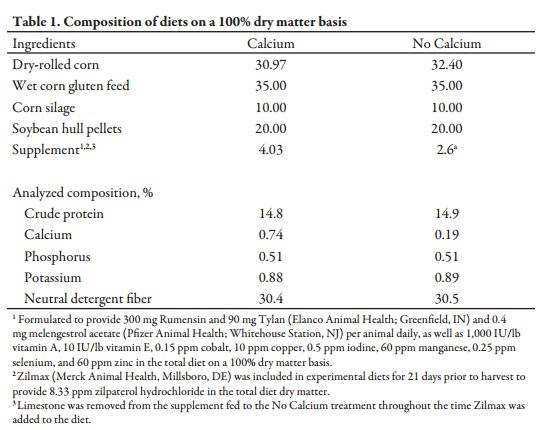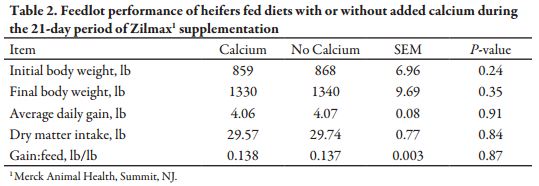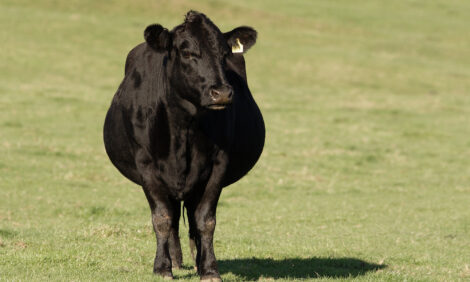



Altering Dietary Calcium Does Not Influence Tenderness in Cattle Fed Zilmax
A team of Kansas State researchers have found that dietary calcium does not alter meat tenderness in cattle fed the recently withdrawn beta-agonist Zilmax.This means that calcium cannot be used as a means of improving beef tenderness during the Zilmax supplementation stage, according to researchers C.L. Van Bibber-Kruger, K.A.. Miller and J.S. Drouillard.
This normally comes in the final 20 days before slaughter when Zilmax is added to feed to add muscle mass at the expense of body fat. One problem of Zilmax however is a loss of meat tenderness.
During the aging process, proteolytic enzymes degrade the myofibrillar proteins that contribute to the perceptions of tough meat, writes the K-State team. Activity of these enzymes is stimulated by the presence of calcium ions, and various strategies aimed at increasing intracellular concentrations of calcium have been investigated as a means of improving beef tenderness.
A group of heifers were stratified by initial body weight and randomly sorted between two treatment groups. Cattle were allotted to feeding pens equipped with concrete floors, fence-lined feed bunks, and automatic water fountains with 8 animals per pen (6 pens per treatment).
Experimental Procedure
A common finishing diet was fed to all cattle until the final 24 days before harvest.
Treatments consisted of:
- A diet containing supplemental calcium (Calcium) in the form of limestone
- A diet in which the limestone had been removed (No Calcium). Prior to Zilmax supplementation, all cattle were fed the control diet (Table 1).
The experimental diets were fed for a period of 21 days in conjunction Zilmax. After 21 days, Zilmax was removed, and cattle were placed back onto a common diet containing limestone for 3 days before harvest.
On the day of harvest, cattle were weighed, loaded onto trucks, and transported 280 miles to a commercial abattoir, where incidence of liver abscesses and hot carcass weight were recorded.
Forty-eight hours later, carcass data were collected, including marbling score; 12th-rib fat thickness; ribeye area; percentage kidney, pelvic, and heart fat; USDA yield grade, and USDA quality grade. A 2-inch section was removed from the loin of each carcass, weighed, placed into a plastic bag, vacuum-sealed, and allowed to age under refrigeration for 10 days.
After aging, loin sections were removed from the bags, patted dry with absorbent towels, and weighed to determine purge loss during wet aging. A single 1-inch steak was removed from the 12th-rib face, weighed, cooked to an internal temperature, and re-weighed to determine drip loss during cooking. Tenderness of steaks was evaluated by Warner-Bratzler shear force.
Results and Discussion
We speculated that the elimination of supplemental calcium from the diets of feedlot cattle during the period of Zilmax supplementation would stimulate mobilization of calcium from bone. By abruptly switching back to calcium-enriched diets during the post-Zilmax withdrawal period, we believed it might be feasible to achieve a temporary increase in skeletal muscle intracellular calcium concentrations.
If calcium concentrations were to increase, it might be possible to stimulate post-mortem activity of calcium-dependant proteases to improve muscle tenderness. Removing calcium from the diet of feedlot heifers during the 21-day period of Zilmax supplementation had no effects on final body weight, average daily gain, or efficiency of feed utilization (Table 2; P > 0.20).
Similarly, carcass yield and quality attributes (Table 3) did not change in response to altering calcium content of the diet (P > 0.20). Shear force values averaged just over 10 lb of force for both treatments, and thus fell within the “acceptable” range of tenderness (Table 4). Altering calcium content had no discernible impact on< measures of tenderness in loin steaks.




